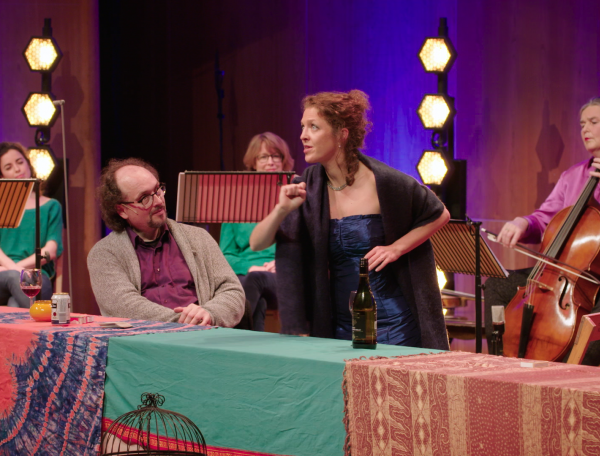

Violin Sonata no. 6 in G major
BWV 1019a performed by Shunske Sato and Diego Ares
at Studio 150 - Bethlehemchurch, Amsterdam
Behind the music
Building blocks
The best kind of functional music
Although there is much uncertainty about the details of Bach’s earliest music, we do know for sure that this sonata accompanied its composer throughout his life. Like the other violin sonatas, BWV 1019 originated in the period of Bach’s big solo works that were created before 1720. The six sonatas for violin and harpsichord, of which this is the last in the series, may have been arrangements of lost trio sonatas. Two later variations of this Sonata in G major have survived in several sources. The last one dates from the 1740’s, which is quite exceptional. In this sonata, Bach appears to have mixed and matched his music to his heart’s content. A Courante for harpsichord solo moved to the third movement of Partita no. 6 BWV 830, the versions differed in the order and even the number of their movements, and over the years Bach replaced most of the movements with new music (from his archive?). So it looked as if he still performed the sonata regularly. To make things easier, Shunske Sato and Diego Ares recorded all the versions – for the puzzlers, enthusiasts and completists among us.
With its five – and at one point even six – movements, the sonata is very different to its five sisters, which are all properly comprised of the four slow-fast-slow-fast movements of the sonata da chiesa convention. Even more surprising is the Allegro for harpsichord. The very first version also had such an unexpected solo, but then a different one to later on. Incidentally, this prominent position in the middle version is taken by a Cantabile ma un poco adagio of unworldly beauty; a quasi-aria that fortunately also appears as a true aria for soprano in cantatas BWV 120 and 120a.
- BWV
- 1019a
- Title
- Sonata for harpsichord and violin no. 6 in G major - first version
- Instrument
- harpsichord, violin
- Genre
- chamber music
- Serie
- Six sonatas (violin and harpsichord)
- Year
- ca. 1725, second and third version around 1730 and 1739/40 respectively
- City
- Leipzig
- Special notes
- There are no fewer than three different variations of this sonata. Various parts of the sonata were later incorporated into other works (BWV 830/3 and 6 and BWV 120/4)
With support from
Walter Snoijink
Extra videos
Vocal texts
Original
Translation
Credits
-
- Release date
- 1 September 2022
-
- Recording date
- 4 November 2020
-
- Location
- Studio 150 - former Bethlehemchurch, Amsterdam
-
- Violin
- Shunske Sato
-
- Harpsichord
- Diego Ares
-
- Instrument
- Joel Katzman, 1991 after Ruckers, 1638
-
- Director, camera and lights
- Gijs Besseling
-
- Music recording
- Guido Tichelman, Joeri Saal
-
- Music edit and mix
- Guido Tichelman
-
- Camera, lights
- Danny Noordanus
-
- Data handling
- Stefan Ebels
-
- Assistant music recording
- Marloes Biermans
-
- Producer
- Jessie Verbrugh
-
- With support from
- Walter Snoijink
Violin Sonata no. 6 in G major
There are no fewer than three different variations of this sonata. Shunske Sato and Diego Ares recorded all the versions.
Discover
Help us to complete All of Bach
There are still many recordings to be made before the whole of Bach’s oeuvre is online. And we can’t complete the task without the financial support of our patrons. Please help us to complete the musical heritage of Bach, by supporting us with a donation!




